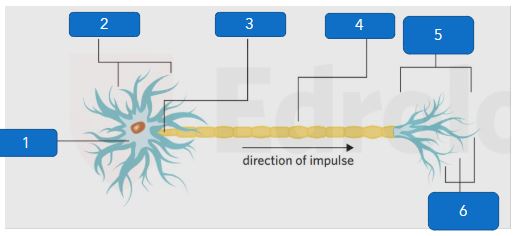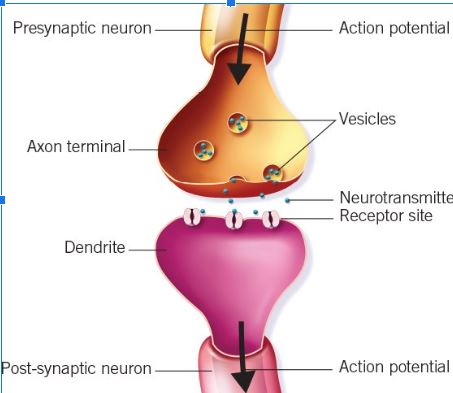Psychology - Unit 3&4
1/173
There's no tags or description
Looks like no tags are added yet.
Name | Mastery | Learn | Test | Matching | Spaced |
|---|
No study sessions yet.
174 Terms
Sleep
A regularly occurring altered state of consciousness characterised by reduced awareness and unique brain-wave patterns.
Consciousness
Awareness of internal and external stimuli, existing on a continuum from focused wakefulness to deep sleep.
Normal Waking Consciousness (NWC)
The state of being awake and aware of one’s thoughts, feelings and environment.
Altered State of Consciousness (ASC)
Any state distinctly different from NWC in awareness, thinking, emotions or self-control.
Naturally Occurring ASC
An altered state that happens without external aid, e.g., sleep, dreaming, daydreaming.
Induced ASC
An altered state intentionally produced by aids such as drugs, meditation or hypnosis.
Psychological Construct
A concept created to describe processes that are inferred from behaviour or measurements but not directly observable.
Electroencephalography (EEG)
Technique that detects, amplifies and records electrical activity of the brain via scalp electrodes.
Electromyography (EMG)
Recording of electrical activity of muscles to monitor changes in movement and tone during sleep.
Electro-oculargraphy (EOG)
Method for measuring eye movements by tracking electrical activity of eye muscles.
Sleep Diary
A self-report log of sleep and waking activities kept over several days to assess sleep patterns.
Video Monitoring
Visual recording of a sleeper to observe posture, movements, breathing or parasomnias.
Brain Waves
Rhythmic electrical impulses of the brain, measured in frequency and amplitude.
Beta Waves
High-frequency, low-amplitude brain waves typical of alert wakefulness and REM dreaming.
Alpha Waves
Moderate-frequency brain waves present during relaxed wakefulness with closed eyes.
Theta Waves
Medium-frequency waves associated with drowsiness, early sleep (N1) and creative wake states.
Delta Waves
Low-frequency, high-amplitude waves dominant in deep NREM stage 3 sleep.
Circadian Rhythm
A biological cycle lasting about 24 hours, e.g., the sleep–wake cycle.
Ultradian Rhythm
A biological cycle shorter than 24 hours, such as the 90-minute sleep cycle.
Suprachiasmatic Nucleus (SCN)
‘Master clock’ in the hypothalamus that regulates circadian rhythms using light information.
Melatonin
Hormone from the pineal gland that promotes sleepiness; secretion peaks at night.
REM Sleep
Sleep with brain activity resembling wakefulness and muscle atonia; most dreaming occurs here.
NREM Sleep
Non-Rapid Eye Movement sleep comprising stages 1-3, with progressively deeper physiological relaxation.
Sleep Cycle
A roughly 90-minute sequence of NREM followed by REM sleep that repeats through the night.
Hypnogram
Graphical representation of sleep stages across a sleep episode.
Sleep Onset
Transition from wakefulness to sleep; often begins with NREM stage 1.
Sleep Latency
The time taken to fall asleep after intending to sleep.
NREM Stage 1 (N1)
Light sleep lasting 1–7 minutes; easily awakened; may include hypnic jerks.
NREM Stage 2 (N2)
Moderate sleep marked by sleep spindles and K-complexes; forms about 50% of total sleep.
NREM Stage 3 (N3)
Deep sleep dominated by delta waves; highest arousal threshold; critical for restoration.
Sleep Inertia
Grogginess and impaired performance immediately after waking, especially from deep sleep.
Partial Sleep Deprivation
Getting less sleep (quantity or quality) than needed over one or more nights.
Total Sleep Deprivation
Going without any sleep for 24 hours or longer.
Sleep Debt
Cumulative loss of sleep that must be ‘repaid’ to return to baseline functioning.
Affective Functioning
The ability to regulate and express emotions, impacting mood, emotional reactivity, and social interactions; often impaired by sleep deprivation.
The CNS
made up of the brain and spinal chord.
It coordinates all incoming sensory information and initiates outgoing messages.
The PNS
made up of all the nerves outside the CNS.
It carries the messages between the CNS and muscles, organs and glands throughout the body.
How many subdivisions of the PNS is there, and what are they?
There are two subdivisions of the PNS, the somatic nervous system and the automatic nervous system.
Somatic nervous system
carries sensory (afferent) information to the CNS
it involves motor (efferent) neurons in the somatic nervous system and are responsible for voluntary movements
Automatic nervous system
controls the body’s internal environment in an self-regulating manner
Sympathetic nervous system
dominant in response to perceived threats and stressful psychological or physiological stimuli
examples:
dilated pupils
increase heart rate
breathing
Parasympathetic nervous system
Has two main functions:
maintaining a balanced internal state otherwise known as homeostasis
counterbalancing the functions of the sympathetic nervous system by lowering arousal and restoring body to a calm state after a threat has passed.
Conscious responses
responses that require energy and usually involves input from the CNS and can involve decision making or choices
examples:
putting on a jumper when you feel cold
Unconscious responses
any response to nervous system that does not require awareness
example:
blinking, sneezing or coughing
Spinal reflexes
involuntary and unconscious response to a stimuli involving the spinal chord and happens without input from the brain
example:
taking your hand away from a hot subject
Neurons
basic blocks of the nervous system
used to communicate information around the body. There are three types:
sensory
motor
interneurons
Sensory (afferent neurons)
transmit information from the body to the brain
Motor (efferent neurons)
transmit information from brain to body
Interneurons
communicate between sensory and motor neurons
SAME
S: sensory
A: afferent
M: motor
E: efferent

Parts of neuron

Neuron: dendrite
receives incoming neural messages
Neuron: soma
the body of the neuron, containing the nucleus with the genetic material for the neuron
Neuron: axon
pathway down which the neural message travels
Neuron: myelin sheath
fatty tissue that encases the axon to aid in speed of transmission
Neuron: axon terminals
exit pathways for neural messages to make their way to the next neuron
Neuron: terminal buttons
releases a chemical substance known as neurotransmitter to a receiving neuron for communication purposes (also known as synaptic knobs)
What process do neurons use to communicate and what do they use?
Neurons communicate through a process called neurotransmission which uses electrochemical energy
Process of neurotransmission
neural impulse: runs from the dendrite down the axon to the axon terminals
terminal buttons: then release a chemical substance (chemical energy)
chemical substances: known as a neurotransmitter, crosses the synapse
The neurotransmitter is then picked by the receiving neuron through dendrites
A neuron has a _______ ______ when not activated
Resting potential
Action potential
also known as electrical impulse, is initiated by the soma and travels along the axon towards the axon terminals
Neurotransmitters
specialized chemical messengers, they transmit information from one neuron to the next (transported in the axon and release at the synapse)

Neurotransmitter
There is a tiny space between neurons called a synapse where neurotransmitters are release by the terminal buttons, before moving onto the next neurons (through dendrites)
Excitatory neurotransmitters
increase the likelihood that the postsynaptic neuron will fire.
The main excitatory neurotransmitter in the neuron system is glutamate
Glutamate
plays an important role in learning and the formation of memories in the brain.
Inhibitory neurotransmitters
decrease the likelihood that the postsynaptic neuron will fire and action potential.
The main inhibitory neurotransmitter in the nervous system is gamma-aminobutyric acid (GABA)
Neuromodulators
subclass of neurotransmitters, they are chemical modules just like neurotransmitters.
Dopamine as a modulator
Dopamine is a multifunctional neurotransmitter
both excitatory and inhibitory effects that is involved in many CNS functions.
Serotonin as a modulator
only has inhibitory effects
can help counterbalance excessive excitatory effects of other neurotransmitters, as GABA does with glutamate.
Synaptic plasticity
results in a strengthening or weakening of connections based on activity levels
Long term potentiation
Relatively permanent strengthening of synaptic connections from repeated activation of a neural pathway
Long term depression
Opposite of LTP, involves relatively permanent weakening of synaptic connections
Sprouting
creation of new extensions on a neuron to allow it to make new connections with other neurons.
This occurs through the growth of nerve endings (sprouts) on axon
Rerouting
occurs when new connections are made between neurons to create new neural pathways
Pruning
elimination of weak, ineffective or unused synapses
Stressor
Any event that causes stress is referred to as a stressor.
Internal stressors
both the physical pain from an injury and the high expectations you have of yourself are internal.
External stressors
sources of stress that originate outside of an individual.
They include environmental events and social cultural stressors:
Acute stress
stress that lasts for a relatively short time
Chronic stress
stress that continues for a prolonged period of time
Distress
form of stress characterised by a negative psychological state
Eustress
form of stress characterised by a positive psychological state
Flight-or-fight or freeze
an automatic, biological response to a perceived stressor
Flight
which involved avoiding or escaping the stressor
Fight
which involves dealing with the stressor directly
Freeze
immobilisation of the body such as minimising movement or vocal sounds to avoid detection
Chronic stress - cortisol
Primary stress hormone
Involved in acute and chronic stress
Acts more slower with lasting effects
Turns off all body systems not required to deal with the stressor
Gut brain axis
A bidirectional (two way) communication link between the central and enteric nervous systems
Enteric nervous system
Subdivision of the autonomic nervous system
Directly connected to the CNS
The two way communication that occurs between the enteric nervous system and the CNS happens
Vagus nerve:
One of the body's biggest nerve
Connects brain to organs in the autonomic nervous system
Runs from brain to colon
Sends messages from the gut to the brain including pain and discomfort
Gut microbiota
System of microorganisms
Includes bacteria, fungi and viruses
They can communicate with each other, therefore microbiota can also affect mental processes and behaviour
Gut dysbiosis
an unbalanced gut microbiome, either in number or type of microbiota
What did the GAS model measure
Hans Selye who made the GAS model
Shows the immediate and long term effects of stress
Most researched with rats
Observed pattern of change
GAS model: Stage 1: Alarm reaction
When the person first becomes aware of the stressor
Two substages: shock and countershock
Shock: temporary state, ability to deal with stressor falls below normal levels
Countershock: body rebounds, sympathetic nervous system is activated, resistance to stressor is increased
GAS model: Stage 2: Resistance
If stress isn’t dealt with immediately, energy is still required, the body continues to respond to cope with the stressor
Unnecessary physiological processes shut down (e.g. sex drive, digestion, menstruation etc.) so energy can be used on dealing with the stressor
Stage 3: Exhaustion
If stress is not dealt with in the resistance stage the body can reach exhaustion
Stress hormones are depleted
Exhaustion symptoms: fatigue, sleep disturbances, severe loss of concentration, vulnerability to anxiety attacks, irritability, depressed mood, jumpiness and crying spells.
Exhaustion symptoms over a long period: High blood pressure/hypertension, heart disease, gastrointestinal problems.
Can be permanent or death can occur
Strengths and limitations of GAS Model
Strengths:
identifies biological processes
Evidence of relationship between stress and illness
Limitations:
Research was not conducted on humans
Doesn’t account for individual differences and psychological factors
Lazarus and Folkman model - Primary appraisals
Primary appraisal:
outcome of a primary appraisal is a decision about whether the event is irrelevant, benign–positive or stressful - if stressful
additional appraisals follow
harm/loss — an assessment of how much damage has already occurred (e.g. ‘I have lost my job’)
threat — an assessment of harm/loss that may not have yet occurred but could occur in the future (e.g. ‘I mightn’t be able to afford the rent’),
challenge — an assessment of the potential for personal gain or growth from the situation (e.g. ‘I’ll get any other job I can and will learn to budget and save money’).
Lazarus and Folkman model - Secondary appraisals
Secondary Appraisal
an evaluation of our coping options and resources for dealing with the event.
Resources are either adequate or inadequate
coping options are either internal (e.g. strength and determination) or external (e.g. money and support from family or friends).
Strengths and limitations of Lazarus and Folkman's model
Strengths:
Focus on psychological
observed people (not animals like GAS)
Weaknesses:
Lack of evidence (subjective)
overlooks physiological responses to stressors.